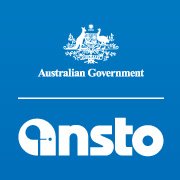Brief description
Strain Scanning (along with reflectometry) has been the major growth area in neutron scattering since its inception 20 years ago. The basic idea is to perform a diffraction experiment, and determine the lattice parameters for the phase(s) of interest in an engineering component. Deviations from a standard unstressed specimen (which can be another portion of the same object) are strains, and with some simple analysis stresses can be extracted. This may be averaged across a whole sample, for instance in the case of metal-ceramic composites, to understand how load is shared between the metal matrix and the ceramic reinforcement. More often, one uses carefully defined apertures before and after the specimen to define a gauge volume of ~1mm3 or less. The object, which may be as large as a whole engine, is then translated and rotated to map out the strains (and therefore the stresses) within the object of engineering interest. The residual stress diffractometer can be used to reveal: * Residual stresses in welds such as rails, pipelines, airplanes * Stresses in coatings such as thermal barrier, wear resistant and corrosion resistant coatings * Stress corrosion cracking due to extreme environments such as: - Heat + pressure (pressure pipes of power generators) - Corrosive environment + stress (pipelines, steel reinforcement in concrete) * Fatigue, crack growth and development in materials undergoing contact stress, structural components and load-bearing parts. * In addition to its engineering applications, Kowari can also be used to investigate new materials such as shape-memory alloys. These materials can return to their original shape after bending (e.g. vascular stents) or deformation and are used in medical and aerospace applications. All data collected on this beamline is stored in NeXus format datafiles and consists of 2 dimensional integer arrays of neutron counts. The metadata embedded in the nexus file indicates the spatial and temporal meaning of the arrays. For details of the NeXus file format, please see the NeXus Data Format relatedInfo link below. For assistance interpreting the data in the first instance please contact the authors of the relevant collection, or if the author is unavailable, one of the instrument scientists (listed in the Beamline Homepage relatedInfo).Delivery method
offlineService Subjects
Other Physical Sciences |
Physical Sciences |
Synchrotrons; Accelerators; Instruments and Techniques |
beamline |
strain scanning |
User Contributed Tags
Login to tag this record with meaningful keywords to make it easier to discover

